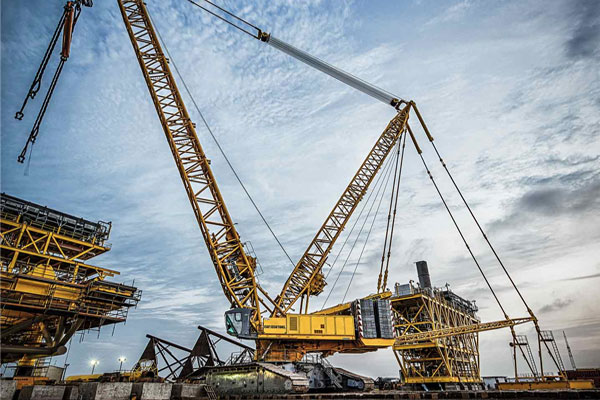
Image Source: Google
Construction has always been a labor-intensive industry, requiring a delicate balance of manpower, machinery, and time to complete projects efficiently. In recent years, the introduction of crawler cranes into construction sites has revolutionized the way projects are handled, maximizing efficiency and speeding up construction timelines. These versatile machines have become an essential tool for construction companies looking to streamline their operations and stay ahead of the competition.
One of the key reasons why crawler cranes are making such a big impact in the construction industry is their impressive lifting capacity. These powerful machines are capable of lifting heavy loads to great heights, making them ideal for a wide range of construction tasks. Whether it's hoisting materials to the top of a high-rise building or placing heavy machinery in hard-to-reach areas, crawler cranes can handle the job with ease. If you need more information about crawler cranes, you may visit Australian Cranes.
Another major advantage of crawler cranes is their mobility. Unlike traditional cranes that are limited by their fixed position, crawler cranes can move around the construction site with ease. This means that they can be quickly repositioned to where they are needed most, reducing downtime and maximizing productivity. Their ability to navigate rough terrain and uneven ground also makes them well-suited for construction projects in challenging environments, such as remote locations or sites with limited access.
Crawler cranes are also known for their stability and versatility. Their wide tracks and low center of gravity provide excellent stability, allowing them to operate safely in a variety of conditions. This makes them ideal for lifting and moving heavy loads in tight spaces or on uneven ground. Additionally, crawler cranes can be equipped with a range of attachments and accessories, such as jibs, winches, and hooks, to enhance their capabilities and tackle a wider variety of tasks. This versatility makes them a valuable asset on any construction site, where the ability to adapt to changing circumstances is crucial.
One of the most notable benefits of using crawler cranes in construction projects is the significant time savings they offer. Their speed and efficiency allow construction companies to complete tasks more quickly, reducing overall project timelines and accelerating the delivery of the final product. This not only helps companies meet tight deadlines but also allows them to take on more projects and increase their profitability. By maximizing efficiency and productivity, crawler cranes are helping construction companies stay competitive in a fast-paced industry.
Furthermore, the use of crawler cranes can also improve safety on construction sites. Their advanced features, such as overload protection systems and remote control operation, help minimize the risk of accidents and injuries. By reducing the need for manual labor and ensuring precise and controlled lifting, crawler cranes create a safer working environment for construction workers. This focus on safety is not only beneficial for the well-being of workers but also helps construction companies avoid costly delays and setbacks due to accidents.
In conclusion, crawler cranes have become an indispensable tool for modern construction projects, thanks to their exceptional lifting capacity, mobility, stability, versatility, and efficiency. By maximizing efficiency and streamlining operations, these powerful machines are helping construction companies complete projects more quickly, safely, and cost-effectively. As the construction industry continues to evolve, crawler cranes will undoubtedly play a key role in shaping the future of construction and driving innovation in the field. With their ability to revolutionize the way projects are handled, crawler cranes are set to remain a vital asset for construction companies looking to stay ahead in a competitive market.
